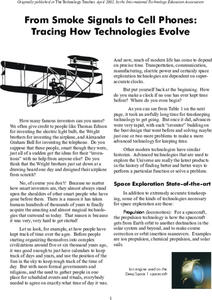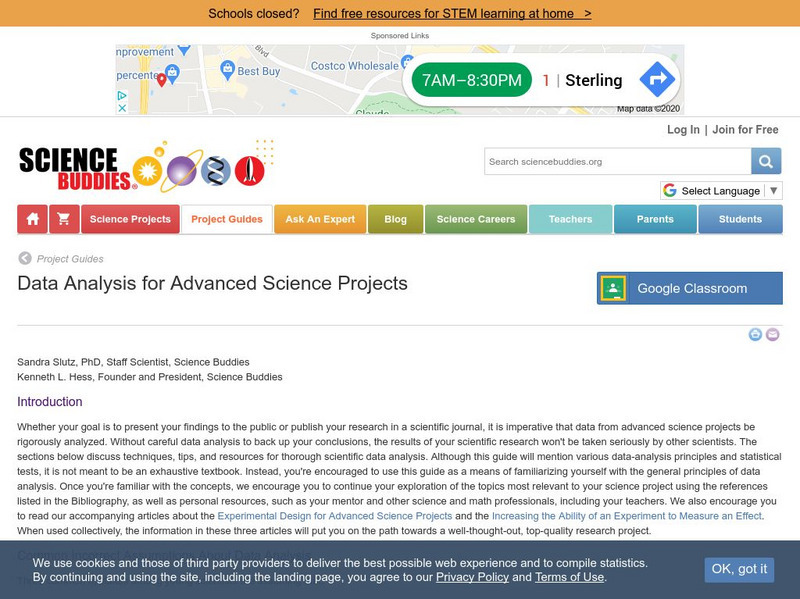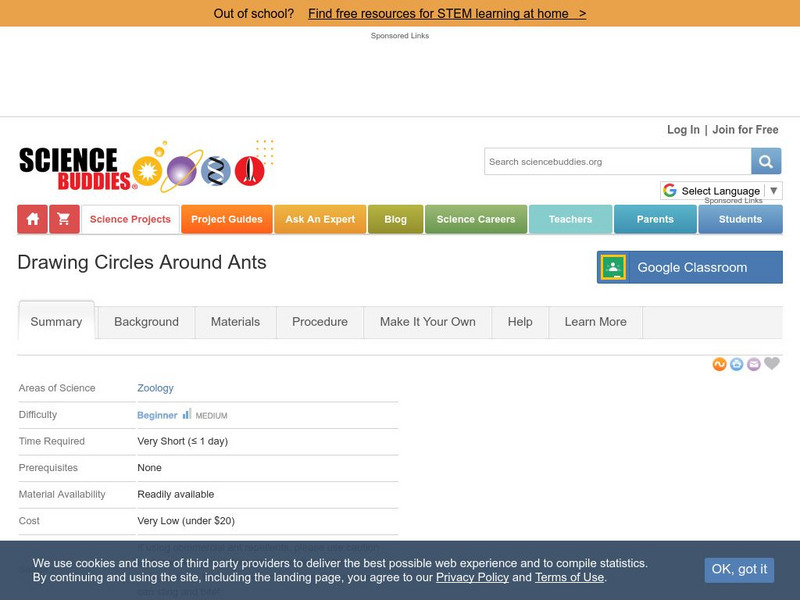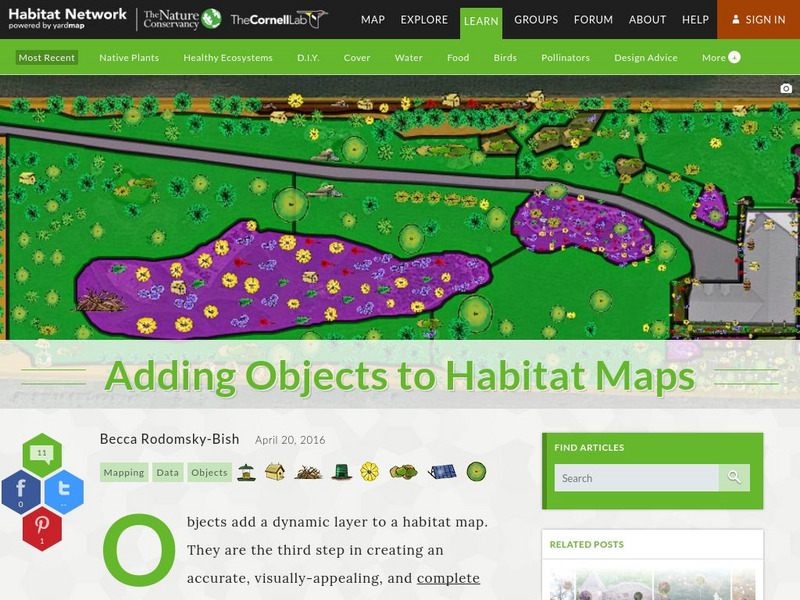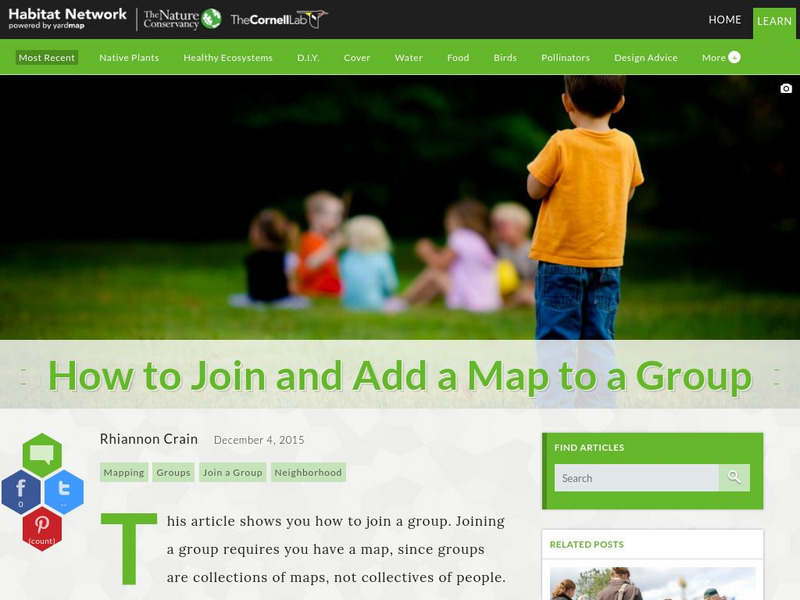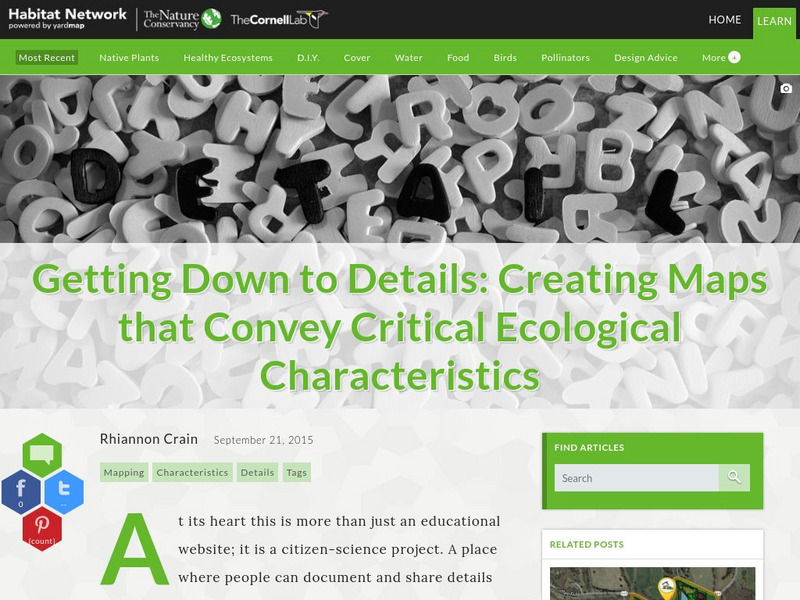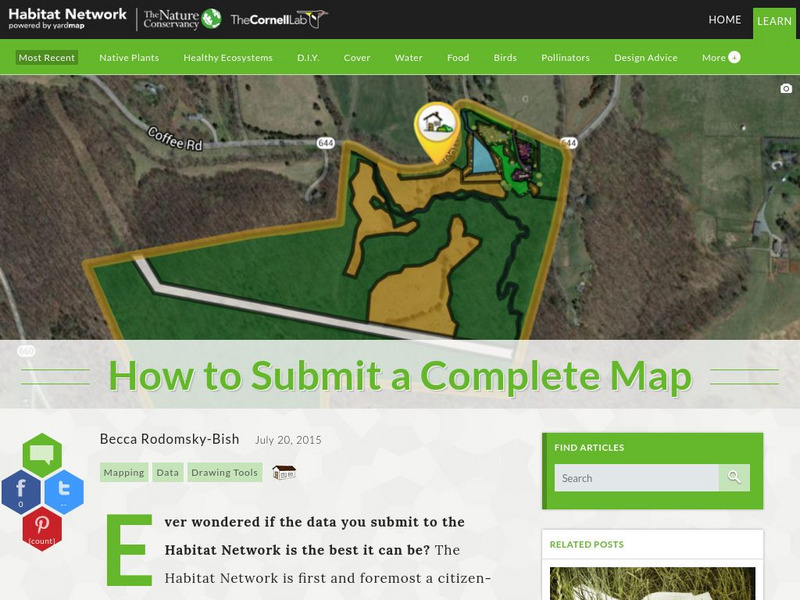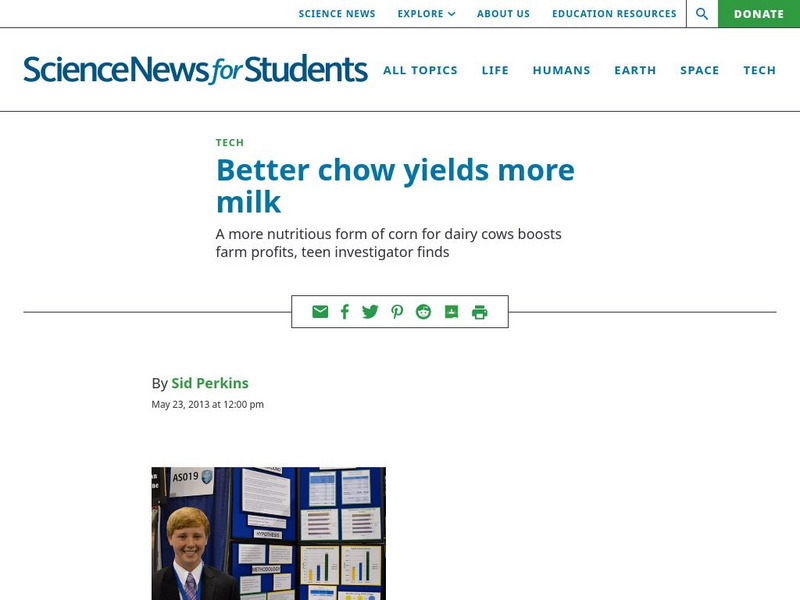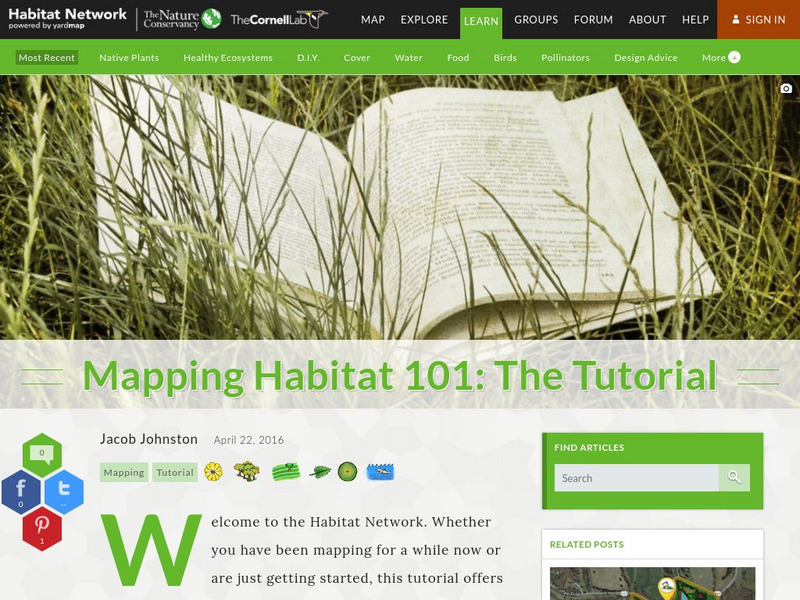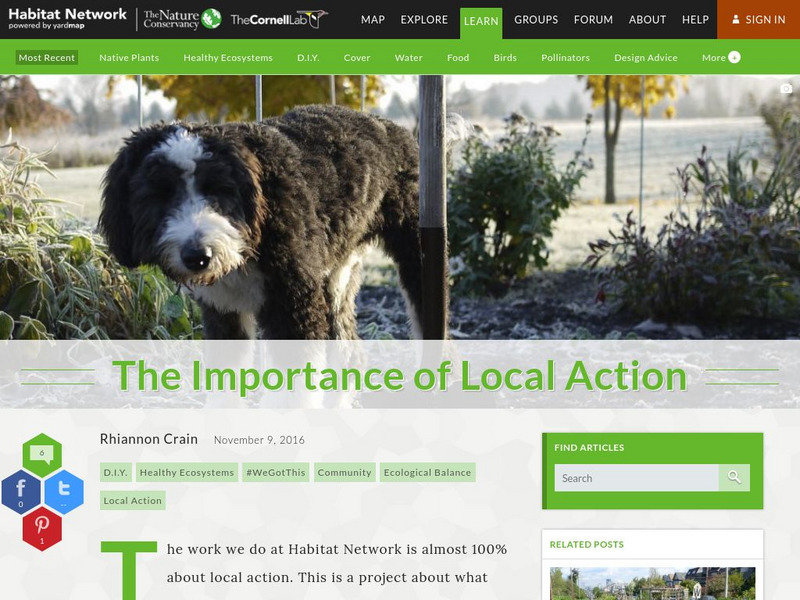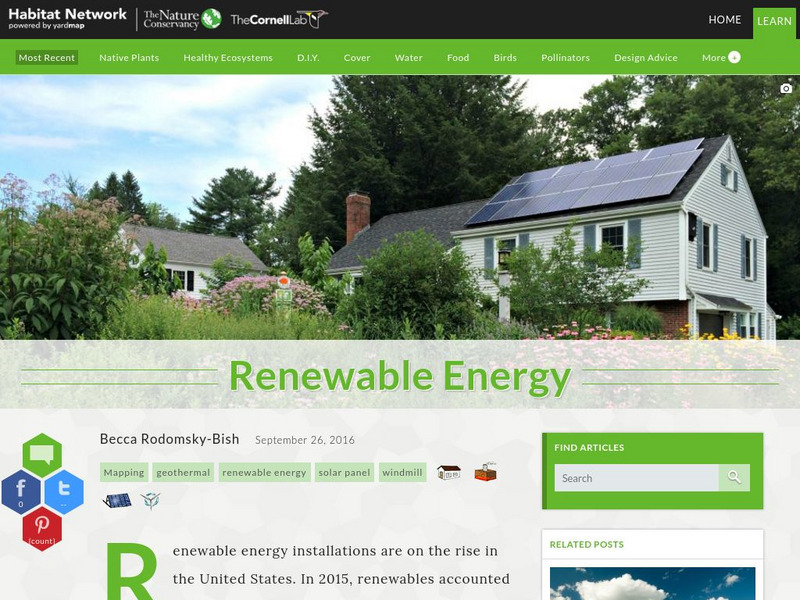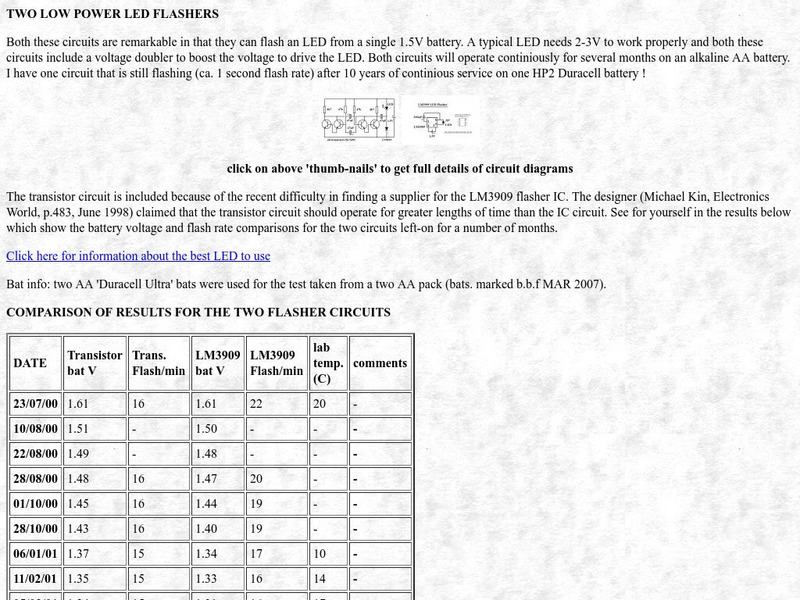NASA
From Smoke Signals to Cell Phones: Tracing How Technologies Evolve
Explore the science of space exploration. Pupils consider technological advances in propulsion, communication, power, navigation, and imaging. They select one of these areas and create a timeline of historical progress that contributed...
Science Buddies
Science Buddies: Data Analysis for Advanced Science Projects
The importance of data analysis in science projects is explained. Describes common mistakes young scientists make. The article then discusses how to find out what the standard methods of data analysis are for the type of research you...
Creative Science Centre
Creative Science Centre: Simple High Temperature Light Bulb Thermometer
A very simple electrical resistance thermometer is described that can be built, calibrated and tested in a school laboratory at virtually no cost. With it, flames, focused sunlight and other high temperature sources can be probed. The...
Science Buddies
Science Buddies: Drawing Circles Around Ants
Do ants sometimes ruin your picnic? There are some chemical ant repellents you can spray to keep them away, but who wants to spray poison all over their food? In this experiment you can investigate some less toxic solutions that may be...
Cornell Lab of Ornithology
Habitat Network: Adding Objects to Habitat Maps
Find out how to add objects, or emojis, to a habitat map for this citizen science project.
Cornell Lab of Ornithology
Habitat Network: How to Join and Add a Map to a Group
Find out how to join a group for the citizen science project, Yardmap by Habitat Network.
Cornell Lab of Ornithology
Habitat Network: Four Mapping Mistakes That Affect Data Quality
Learn the tips and tricks of successful habitat mapping for this citizen science project.
Cornell Lab of Ornithology
Habitat Network: Creating Maps That Convey Critical Ecological Characteristics
Get to the heart of this citizen science project that invites citizens from all over the country to map and identify their habitat ecology.
Cornell Lab of Ornithology
Habitat Network: How to Submit a Complete Map
Find out how to submit your local habitat map containing real data to an established citizen science project.
US Geological Survey
U.s. Geological Survey: Earthquake Science Fair Project Ideas
Twenty earthquake-related science fair project ideas. Each idea has a short description of a possible investigation.
Other
Editorial Projects in Education: Teaching Students to Wrangle 'Big Data'
This article describes how students are learning how to analyze big data and and understand how it is used by organizations. The article also discusses data science as a potential career path. Includes a link to a page where you can...
Society for Science and the Public
Science News for Students: Small but Wise
Describes the WISE Project, which has an infrared telescope orbiting the Earth taking photographs of never before seen areas of space.
Christian Science Monitor
Christian Science Monitor: Population Decline in Sight
This Christian Science Monitor article notes the projections of a UN Conference of March 2001, predicting that fertility rates worldwide are decreasing, and population decline is in sight.
Society for Science and the Public
Science News for Students: Better Chow Yields More Milk
This article reports on a recent project from a teen that found that feeding a higher quality corn to dairy cows resulted in increased milk production. Includes a list of vocabulary words.
Creative Science Centre
Creative Science Centre: Experiments With Homemade Batteries
Simple homemade batteries are described that can be made from items found in the home or school lab. These experiments help students understand how to wire them up, the origin of current, voltage and power, as well as the chemistry that...
Creative Science Centre
Creative Science Centre: Perhaps the Simplest Homemade Generator in the World
This very simple, but effective generator shows in a wonderfully engaging way the fundamentals of electricity generation. The generator is made from a coil of wire wound around the outside of a plastic 35mm-film can. The two coil ends...
Cornell Lab of Ornithology
Habitat Network: Mapping Habitat 101: The Tutorial
Watch this tutorial to understand how to participate in the Habitat Network citizen science habitat mapping project.
Cornell Lab of Ornithology
Habitat Network: The Importance of Local Action
The Habitat Network discusses the importance of citizen action projects such as this one.
Cornell Lab of Ornithology
Habitat Network: Renewable Energy
Find out about efforts to promote the use of renewable energy sources by homeowners and businesses. This was a project where homeowners could submit data about what they were doing to use renewable energy sources. The site is no longer...
Cornell Lab of Ornithology
Habitat Network: Announcing: Photo Upload
Learn about direct photo upload to the Habitat Network crowdsourcing citizen science website.
Cornell Lab of Ornithology
Habitat Network: Adding Bird Sightings to Your Habitat Map
By mapping a local habitat, people are providing the Cornell Lab of Ornithology citizen science program with invaluable habitat information in regards to bird diversity.
Creative Science Centre
Creative Science Centre: Two Low Power Led Flashers
Explains the design of two circuits that can flash an LED from a single 1.5V battery. A typical LED needs 2-3V to work properly and both these circuits include a voltage doubler to boost the voltage to drive the LED. Both circuits will...
Other
Chemistry Science Fair Ideas
A descriptive list of chemistry-oriented ideas that answer such questions as: Have you ever wondered what happens inside of an egg when it is hardboiled? How do products like Bounce act to soften clothes after they are washed and dried?...
Buck Institute
Pbl Works: Pbl, Common Core and Next Gen Standards
[Free Registration/Login Required] This two-page article summarizes the alignment of PBL with Common Core standards for ELA and math, plus the Next Generation Science Standards. It is an excerpt from the BIE book, PBL for 21st Century...
Other popular searches
- 4th Grade Science Project
- Physical Science Projects
- Science Project on Pulleys
- Science Project Volcano
- Science Project Gravity
- Science Project Ideas
- Forensic Science Project
- Science Fair Project Ideas
- Rock Science Project
- Science Project Food
- Science Project Terrarium
- Science Fair Project Data
